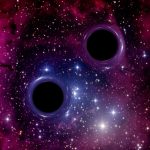LISA May Reveal the Secret Lives and Deaths of Stars With Gravitational Waves0
- From Around the Web, Space
- March 4, 2020
The space telescope LISA will tell astronomers how stars live and die in ways we’ve never known before.

The space telescope LISA will tell astronomers how stars live and die in ways we’ve never known before.

General relativity suggests the spacetime oddities can be fully described by their mass and spin

Sean McWilliams, an assistant professor at West Virginia University, has developed a mathematical method for calculating black hole properties from gravitational wave data. He has written a paper describing his method and posted it on the arXiv preprint server. The paper has been accepted for publication in Physical Review Letters.

Astronomers still hope to catch a star going supernova and a bumpy neutron star, among others

Scientists added 4 new sets of spacetime ripples to their inventory

Gravitational waves may be forged in the heart of the galaxy, says a new study led by PhD student Joseph Fernandez at Liverpool John Moores University. He sets out the work in a presentation on 3rd April at the European Week of Astronomy and Space Science in Liverpool.

Scientists on the lookout for subtle disturbances in the fabric of space-time have detected the signal from a cataclysmic collision between two black holes that lie some 3 billion light-years away, much farther two previous discoveries.

Signatures of extra dimensions that don’t normally affect the four dimensions we can observe could show up in the way they warp ripples in space-time

Astronomers have uncovered a supermassive black hole that has been propelled out of the center of a distant galaxy by what could be the awesome power of gravitational waves.

Following February’s historic announcement, LIGO has again spotted ripples in the fabric of spacetime, from the collision of a second set of black holes